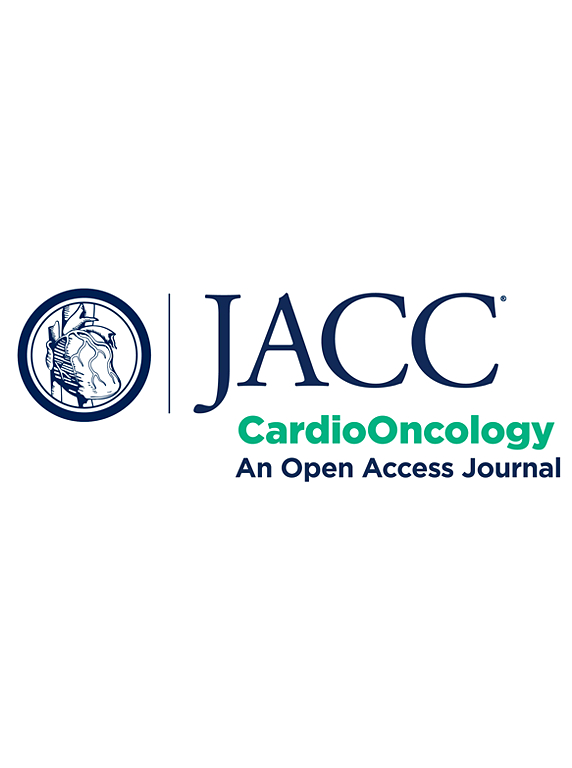同时服用丹曲林足以预防阿霉素引起的心肌病。
IF 12
1区 医学
Q1 CARDIAC & CARDIOVASCULAR SYSTEMS
引用次数: 0
摘要
背景:多柔比星(DOX)是一种常用的抗癌药物,可导致心功能障碍,是一项重大的临床挑战。DOX已被证明通过肌浆网的ryanodine受体2 (RYR2)诱导Ca2+泄漏,增加细胞质中的Ca2+水平。目的:本研究探讨稳定RYR2是否能抑制dox诱导的心肌病(DIC),并确定丹曲林的最佳用药时间。方法:采用体内和体外实验研究RYR2稳定剂对DOX心脏毒性的影响。结果:DOX给药引起钙调素解离,RYR2中Ca2+明显泄漏,并增加离体心肌细胞的氧化应激。稳定RYR2四聚体——无论是用丹曲林药理学还是通过RYR2 V3599K突变(增强钙调素结合亲和力)——抑制了这些作用。在DIC小鼠模型中,DOX损害心功能,增加纤维化和tunel阳性细胞,降低GRP78,升高过氧化脂质水平,导致内质网应激和铁上吊。持续丹曲林治疗和RYR2 V3599K突变均能改善心功能。有趣的是,即使在DOX后7天停用丹曲林也能提供心肌保护。结论:短期联合使用丹曲林是预防DIC的一种有希望且临床可行的策略。鉴于丹曲洛烯作为恶性高热治疗的临床安全性,这些发现提示了将丹曲洛烯重新定位于DIC预防的潜力。本文章由计算机程序翻译,如有差异,请以英文原文为准。
Concomitant Administration of Dantrolene is Sufficient to Protect Against Doxorubicin-Induced Cardiomyopathy
Background
Doxorubicin (DOX), a commonly used anticancer agent, can result in cardiac dysfunction, presenting a significant clinical challenge. DOX has been shown to induces Ca2+ leakage via the ryanodine receptor 2 (RYR2) of the sarcoplasmic reticulum, increasing Ca2+ levels in the cytoplasm.
Objectives
This study investigated whether stabilizing RYR2 could suppress DOX-induced cardiomyopathy (DIC) and identified the optimal duration of dantrolene treatment as a pharmacological method.
Methods
We investigated the effects of RYR2 stabilization on DOX cardiotoxicity using in vivo and in vitro experiments.
Results
DOX administration caused calmodulin dissociation, marked Ca2+ leakage from RYR2, and increased oxidative stress in isolated cardiomyocytes. Stabilizing the RYR2 tetramer—either pharmacologically with dantrolene or genetically via RYR2 V3599K mutation, which enhances calmodulin binding affinity—suppressed these effects. In DIC mice models, DOX impaired cardiac function, increased fibrosis and TUNEL-positive cells, reduced GRP78, and elevated lipid peroxide levels, leading to endoplasmic reticulum stress and ferroptosis. Both continuous dantrolene treatment and RYR2 V3599K mutation improved cardiac function. Interestingly, dantrolene administration provided myocardial protection even when terminated 7 days after DOX.
Conclusions
Short-term concomitant use of dantrolene offers a promising and clinically feasible strategy to prevent DIC. Given dantrolene’s established clinical safety as a treatment for malignant hyperthermia, these findings suggest potential for repositioning dantrolene in DIC prevention.
求助全文
通过发布文献求助,成功后即可免费获取论文全文。
去求助
来源期刊

Jacc: Cardiooncology
Multiple-
CiteScore
12.50
自引率
6.30%
发文量
106
期刊介绍:
JACC: CardioOncology is a specialized journal that belongs to the esteemed Journal of the American College of Cardiology (JACC) family. Its purpose is to enhance cardiovascular care for cancer patients by publishing high-quality, innovative scientific research and sharing evidence-based knowledge.
The journal aims to revolutionize the field of cardio-oncology and actively involve and educate professionals in both cardiovascular and oncology fields. It covers a wide range of topics including pre-clinical, translational, and clinical research, as well as best practices in cardio-oncology. Key areas of focus include understanding disease mechanisms, utilizing in vitro and in vivo models, exploring novel and traditional therapeutics (across Phase I-IV trials), studying epidemiology, employing precision medicine, and investigating primary and secondary prevention.
Amyloidosis, cardiovascular risk factors, heart failure, and vascular disease are some examples of the disease states that are of particular interest to the journal. However, it welcomes research on other relevant conditions as well.
 求助内容:
求助内容: 应助结果提醒方式:
应助结果提醒方式:


